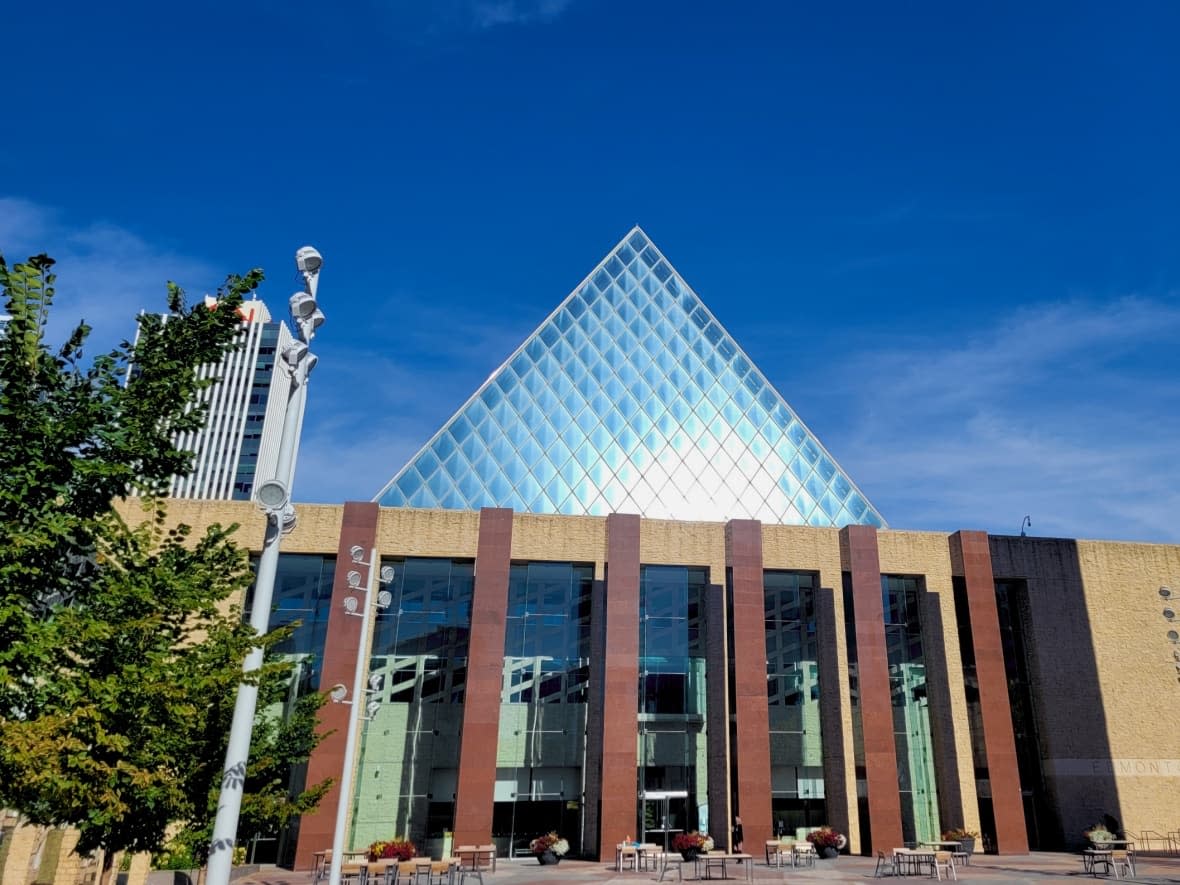Edmonton outlines response to Alberta justice minister's safety plan demand

City of Edmonton officials promise plans are already in place to combat disorder downtown and on transit.
City manager Andre Corbould outlined Wednesday morning how the city would respond to an order from the justice minister for a safety plan. On Thursday, Tyler Shandro invoked section 30 of Alberta's Police Act directing the city to boost police presence in problem areas.
Corbould said the city's response should include a letter from the mayor and a written plan with immediate, near-term, and longer-term actions.
His presentation provided more detail on actions being undertaken in the city's Chinatown neighbourhood. On Tuesday, hundreds showed up at city hall to demand action after two prominent community members of the neighbourhood were killed.
City council approved $300,000 in funding that day to address immediate needs, which Corbould said Friday morning would go toward funding private security.
A Chinatown recovery fund is also being set up through the city manager's office, using $1 million from the financial stabilization fund. A committee to disperse the funds will need to be established, Corbould said.
Other additional steps planned include improving the streetscape, installing public washrooms, and cleaning up needles, roads, and alleyways.
Work already underway
Corbould said the province would be provided with a comprehensive overview of some of the plans underway, including the community safety and well-being strategy approved on Tuesday and the anti-racism strategy approved in February
He also highlighted the implementation of a "multi-disciplinary approach," including saturation policing that will see more "boots on the ground" in downtown, Chinatown, and Alberta Avenue areas as well as the creation of community support teams pairing city workers with police.
"We believe that current work is appropriate in addressing the issues at hand with the resources we have available and we will assert that," Corbould told council.
"However, we are aware there may be an expectation from the province that more money specifically be provided to EPS notwithstanding everything else we've outlined here today."

Mayor Amarjeet Sohi told reporters Friday he hopes the exercise can serve to open dialogue with the province on how it can help.
"So we can tackle some of the root causes of crime and disorder there is things such as homelessness, mental health addictions and poverty."
Politics at play
Coun. Aaron Paquette asked why it had taken the deaths in Chinatown to get the attention of city organizations and the provincial government.
Corbould said the administration did not have an answer but that the situation had been "escalating for a while" and that there was "a fair amount of politics."
Edmonton police Chief Dale McFee also addressed council about the speed of the police response in allocating resources to known hotspots.
He said downtown makes up 19 per cent of the service's patrol calls and that no single entity can solve the problem and would need to work collectively.
"Whatever the urgency and the reasons as you asked [Corbould], I don't really think that matters anymore.
"Let's just get going."
Last week, after the deaths and a series of other violent crimes in Edmonton's core, the Edmonton Police Service promised to increase enforcement in the downtown area, including Chinatown.
Council debate on adjusting the EPS funding formula started Tuesday but was not continued Friday. The agenda item is expected to return at a future council session.

 Yahoo Movies
Yahoo Movies 
